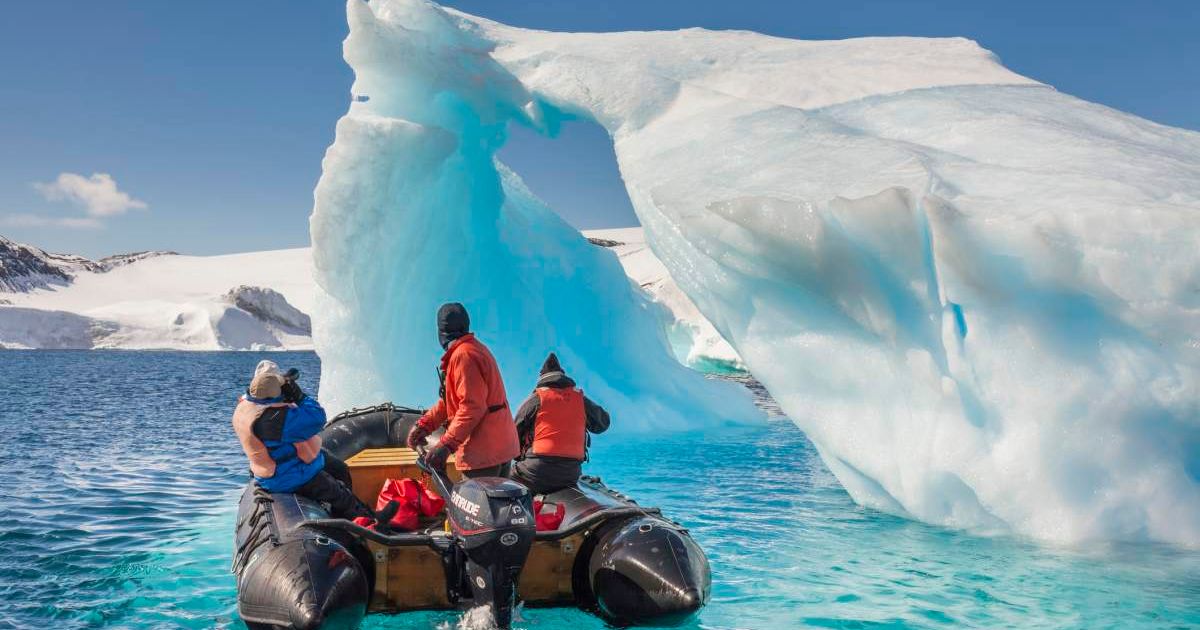Methane Gas Is Mysteriously Bubbling up From Antarctic Sea Floor — and It Only Worsens Global Warming

Millions of years ago, four volcanoes rushed into one another and crashed, birthing Ross Island, which sits today at the eastern lip of the Antarctic Ice Sheet. Every little grain of ice sitting around in Ross rumbles with mystery, waiting to be explored, unfurled. Tucked within it, on the southwest coast, is a smaller, triangle-shaped island named Cape Evans, which has been catching the attention of researchers lately. Each time they visited the island over the past few years, the island seemed to display an unusual bubbling dance happening from the bottom up, as documented in a study published in Nature Communications.

Somewhere within the shallower slushes of sea ice, the vertical columns of bubble plumes are slowly weaving their way to the surface. The bubbles oozing out from the seafloor were actually the burps of methane waking up from dormancy. Methane, the scientists described, is akin to a “dangerous animal.” As long as it’s there in balanced quantities, it is harmless. But once the balance is disturbed, provoked, or underestimated, it can become a catalyst for the ongoing global heating and start charring out the life on the planet. When Sarah Seabrook, the lead researcher and scientist who visited Ross Island, observed the bubbles rising upwards from the sea, she and her team experienced an “immediate excitement,” which was “quickly replaced with anxiety and concern.”

Polar regions sit on a hotbed of greenhouse gases like carbon dioxide and methane. Climate change often threatens these regions with melting ice, thawing permafrost, degradation of glacial ice and gas hydrates, and an unrestrained influx of methane as a result. The more the planet heats up, the more this ice matrix approaches a weakening stage. While much of the methane is eaten up by methane-munching microbes living in permafrost and sea ice, the amount currently released has no match and could soon trigger a massive dissociation of the ice sheets, triggering a brutal collapse of life. A “climate feedback loop” would be initiated, and the world would start choking in the inky mist of these gases.

When Seabrook and her team detected the methane explosion, they noticed that much of it was arising from small, white microbial mats. This methane release, unlike the typical ones, has likely been prompted by the climate-reactive fluids and gases churning in the icy waters of Antarctica’s Ross Sea, researchers wrote. Here, methane appears to be seeping out of the cracks in the Antarctic seafloor, carving vertical trails looming towards the surface. The subglacial formations, enriched in trace metals, nutrients, and gases, could also be one of the factors. “Methane seeps are relatively common globally, but previously there was only one confirmed active seep in the Antarctic, Seabrook said in a press release. “Something that was thought to be rare is now seemingly becoming widespread,” she told CNN.

Not just one, but numerous seafloor seeps were identified in the shallow coastal environments of Northern Victoria Land and McMurdo Sound, and in the biological dead zones. The seeps were detected with shipboard water column acoustic surveys and remotely operated vehicles. This study is acting as one of the primary linchpins for the underpinnings of global efforts aimed at reducing the intensity and strength of the climate crisis.

According to the US Environmental Protection Agency, methane is classified as a “super pollutant” and one of the most concerning greenhouse gases, responsible for about a third of the current global warming. In such a scenario, these methane leaks could largely influence the biogeochemistry as well as the health of the benthic systems and the fauna residing in them. Take sea stars. They are dying already.
More on Green Matters
Antarctica’s Sea Floor Is Facing Severe Damage by the Weight of Tourism and Ships
Experts Are Worried After Finding 85 Hidden Lakes Filling up and Draining Below Antarctica
Scientists Looked Beneath Antarctica’s Sea Ice — and Found a Strange Upside-Down World